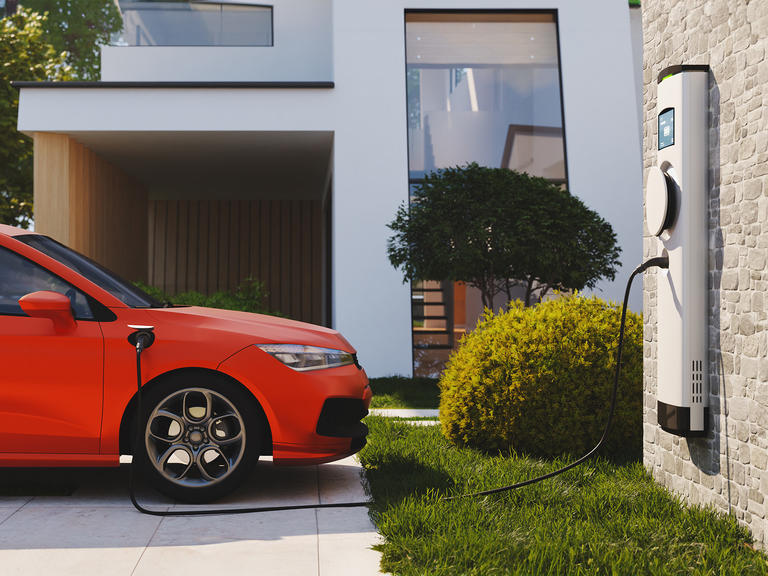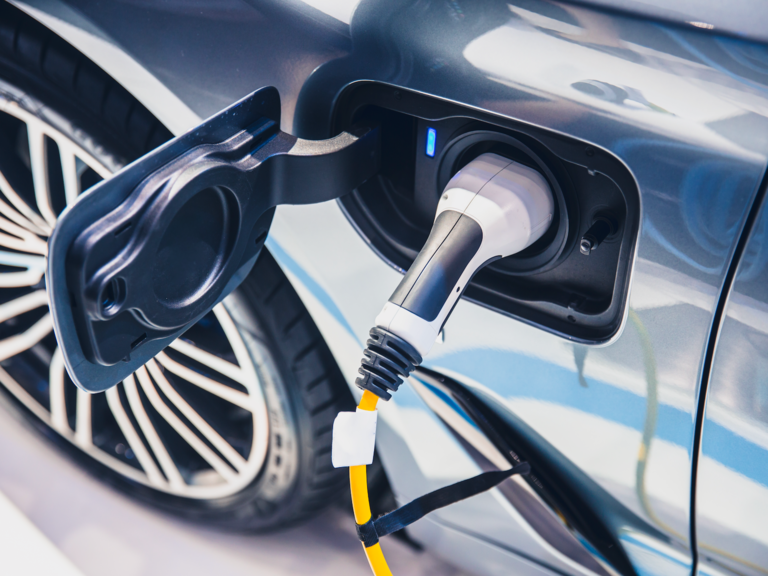What is V2G technology and how does it affect EV adoption?

This new technology promises to solve range anxiety and turn EVs into emergency electricity backups.
Recent electric vehicle (EV) adoption rates show customers are concerned that using electricity to power vehicles might overburden the power supply. But a new technology is promising to make EVs as good for the grid as they are for the environment.
That technology is called Vehicle-to-Grid (V2G).
A groundbreaking system that allows EVs to engage with the source they are charging from, V2G enables electric vehicles to draw energy when needed and return it when necessary.
This two-way energy flow makes EVs an integral part of a more flexible and resilient system.

Driving off grid
V2G technology represents an intersection of electric vehicles and energy management systems.
By maximizing the potential of EV batteries, V2G essentially turns them into mobile electricity storage. As a result, it increases renewable energy integration and security while reducing grid congestion.
The main advantage of the technology is the ability to help balance the supply and demand of electricity, especially during peak times or emergencies.
By using EV batteries as temporary storage solutions, V2G has the potential to strengthen the resilience of the system and decrease reliance on fossil fuels, promoting a sustainable ecosystem that benefits both consumers and the environment.
And the best part? Reduced electricity costs and an alternative power source during outages.

Read more: The truth about EV battery recycling
The value of giving back
V2G technology offers significant environmental and economic advantages such as reduced carbon emissions.
By allowing EVs to store and return renewable energy, V2G helps maximize the use of clean sources and minimize the reliance on fossil fuel-based power plants. Additionally, by reducing the strain on the grid during peak demand times, V2G can decrease the need for expensive infrastructure upgrades.
For EV owners, the economic incentives are clear. Selling excess power back to the electric network can offset vehicle costs, making EV ownership more economically attractive.
Add the ability to provide backup power during outages and what you get is increased energy security, which is extremely valuable in areas prone to natural disasters.
Range anxiety, who?
One of the biggest and best-known hurdles in the widespread adoption of electric vehicles (EVs) is range anxiety, the fear of running out of battery power before reaching a destination. V2G technology can play a big role in alleviating this concern.
By allowing EVs to take charge from and give back to the grid when needed, V2G increases the flexibility of how EV owners manage their charging needs.
Knowing they can capitalize on surplus energy during low-demand periods and even generate income by supplying power back during peak times can encourage more drivers to embrace EVs without worrying about being stranded.
And it gets even better.
Thanks to its ability to support a more robust and reliable charging infrastructure, V2G can support the development of fast-charging stations integrated with renewable sources.
As a result, V2G technology makes EVs more appealing to customers by introducing the possibility of transforming range anxiety into confidence for drivers.

Read more - EV ambitions: the evolution of electric cars
Adopting sustainability
V2G has the potential to significantly accelerate the adoption of electric vehicles by enhancing their economic appeal and reducing range anxiety.
In terms of financial benefits, the ability to earn income from selling electricity back to the supply system can offset the upfront cost of purchasing an EV.
Meanwhile, improved charging infrastructure facilitated by V2G helps alleviate fears about running out of power, making EVs a more viable option for a wider audience.
The future is green
Continued advancements in battery technology and grid integration will only enhance its capabilities.
Innovations such as smart charging stations and AI-driven management systems can further streamline V2G operations, making it an integral component of smart cities worldwide.
Additionally, the growing focus on sustainability and clean energy can drive policy changes that support the widespread adoption of V2G technology.
By transforming how we think about the consumption and distribution of electricity, V2G has the potential to position EVs as a key part of our transportation network and active contributors to a more sustainable future.
Have your say
Sign up for our newsletter
Why sign up:
- Latest offers and discounts
- Tailored content delivered weekly
- Exclusive events
- One click to unsubscribe



